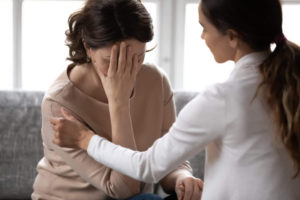You’ve heard of both conditions, but how exactly does bipolar disorder differ from depression? While there are similarities, both disorders have their own set of unique symptoms. Check out the article below written by Katie Hurley, LCSW, explaining some of the key distinctions:
Bipolar Disorder and Depression: Understanding the Difference
Bipolar disorder is easily confused with depression because it can include depressive episodes. The main difference between the two is that depression is unipolar, meaning that there is no “up” period, but bipolar disorder may include symptoms of mania or periods of not feeling depressed.
To differentiate between the two disorders, it helps to understand the symptoms of each one.
Symptoms of Depression
The essential feature of major depressive disorder is a period of two weeks during which there is either depressed mood most of the day nearly every day or loss of interest or pleasure in nearly all activities. Other potential symptoms include:
· Significant weight loss when not dieting or weight gain and changes in appetite
· Insomnia or hypersomnia nearly every day
· Psychomotor agitation or retardation nearly every day
· Fatigue or loss of energy nearly every day
· Feelings of worthlessness or excessive guilt
· Impaired ability to think or concentrate, and/or indecisiveness
· Recurrent thoughts of death, recurrent suicidal ideation without a plan, or a suicide attempt or suicide plan
The symptoms of major depressive disorder cause significant distress or impairment in social, occupational, or other areas of functioning. To meet the diagnostic criteria for major depressive disorder, there should be no history of a manic episode or a hypomanic episode.
Symptoms of Bipolar Disorder
Although bipolar disorder can include the above depressive symptoms, it also includes symptoms of mania or hypomania. Bipolar disorder is characterized by mood swings that fluctuate between depressive lows and manic highs.
A manic episode is described as a distinct period of abnormally and persistently elevated, expansive, or irritable mood and increased goal-directed activity or energy, lasting at least one week.
Symptoms of mania include:
· Inflated self-esteem or grandiosity
· Decreased need for sleep
· More talkative than usual or pressure to talk
· Flight of ideas, racing thoughts
· Distractibility
· Increase in goal-directed activity
· Excessive involvement in potentially reckless activities (usually involving drugs, money, or sex)
With bipolar disorder, the mood episode is severe enough to cause marked impairment in social or occupational functioning or to require hospitalization to avoid self-harm.
Types of Bipolar Disorder
There are two types of bipolar disorder. Understanding the different types of bipolar disorder can help distinguish between bipolar disorder and depression.
· Bipolar I Disorder: This is diagnosed when a patient has had at least one manic episode, regardless of whether or not there has been a depressive episode.
· Bipolar II Disorder: This diagnosis is given when a patient has had at least one depressive episode and a period of elevated mood referred to as hypomania. Bouts of hypomania are not as extreme as mania and are shorter lived. Patients with Bipolar II tend to experience longer depressive episodes and shorter states of hypomania. Patients often seek treatment during the depressive episode, as the hypomanic symptoms might not impact functioning as much.
· Cyclothymic Disorder: The essential feature of cyclothymic disorder is a chronic, fluctuating mood disturbance involving numerous hypomanic symptoms and periods of depressive symptoms that are distinct from each other. The hypomanic symptoms do not meet the full criteria for a hypomanic episode and the depressive symptoms do not meet the full criteria for a depressive episode.
Treatment for Bipolar and Depression
Left untreated, both bipolar disorder and major depressive disorder can have a major impact on social and occupational functioning. Both include the risk of suicide. The good news is that both conditions are treatable. Combination treatment often works best in both cases. Possible treatment modalities include:
· Talk therapy
· Cognitive behavioral therapy
· Family therapy (involvement of family members increases success)
· Medication management (including antidepressants and/or mood stabilizers)
Patients with both depression and bipolar disorder respond well to highly structured routines. Creating a routine helps patients know what to expect and follow through with medication management independently.
Boston Clinical Trials has upcoming studies for both bipolar disorder and depression. Give our office a call today to see if you qualify!
Article from: https://www.psycom.net/depression.central.bipolar.depression.html








